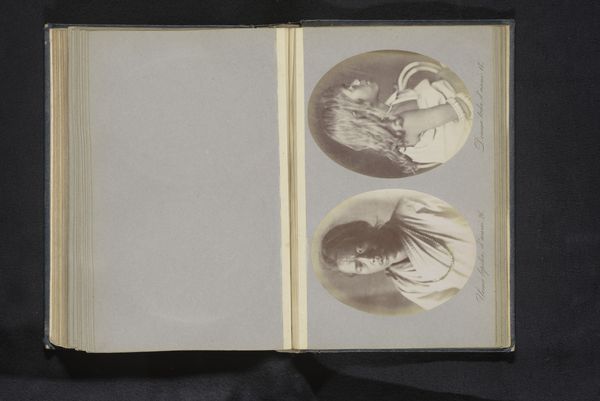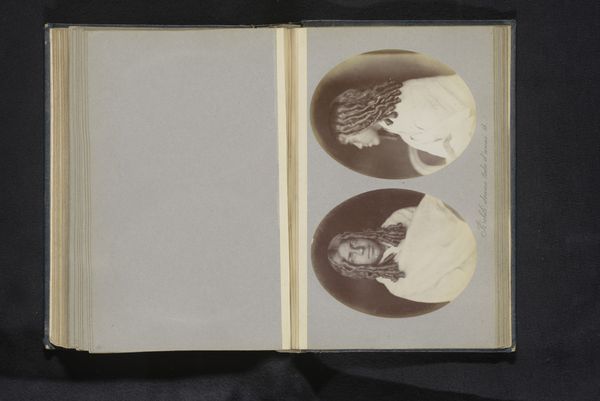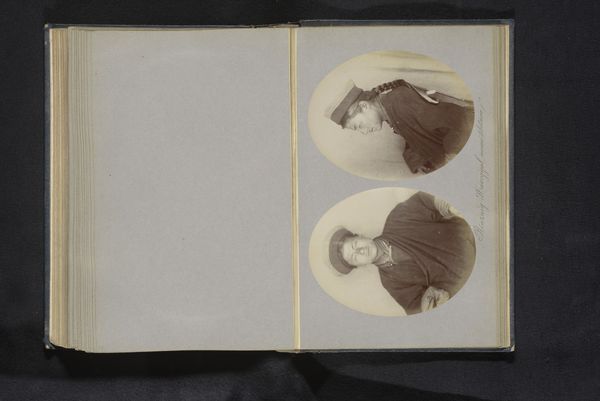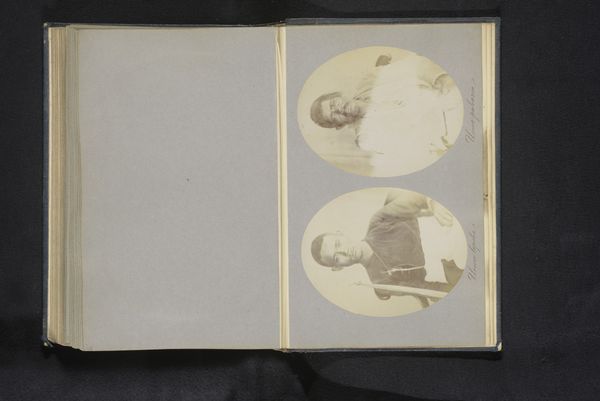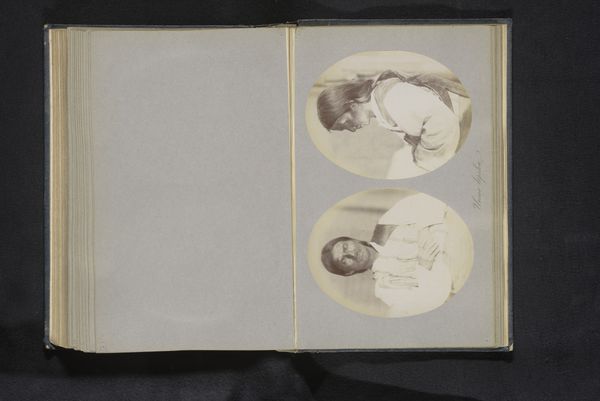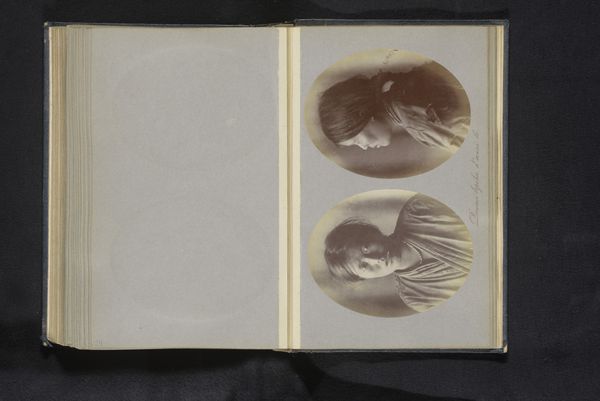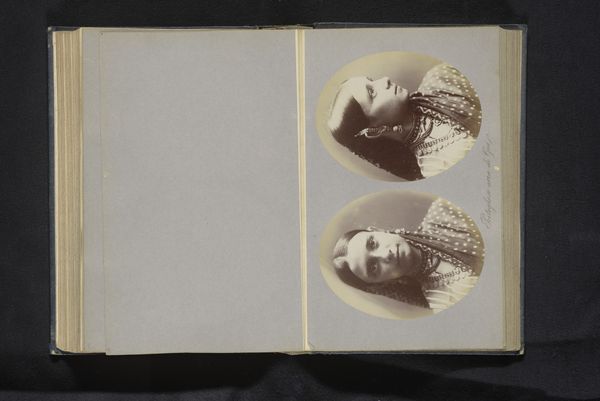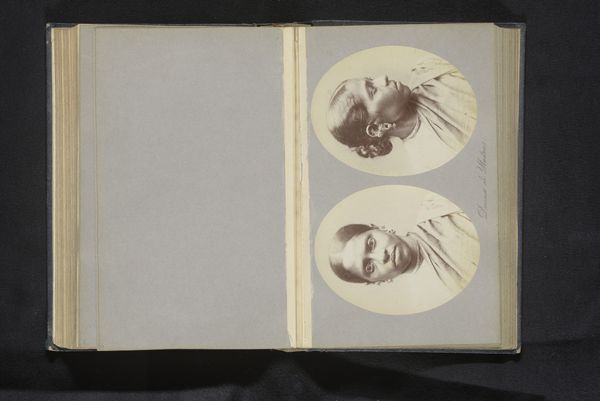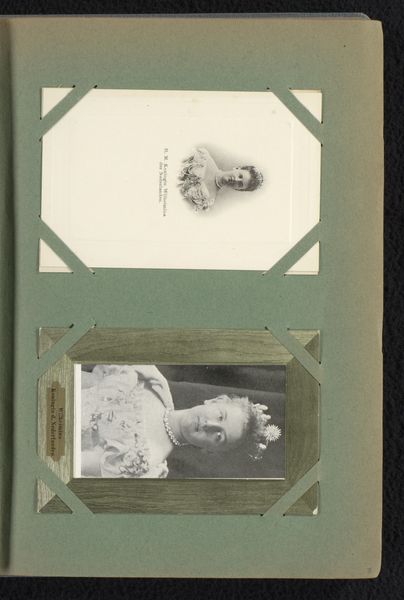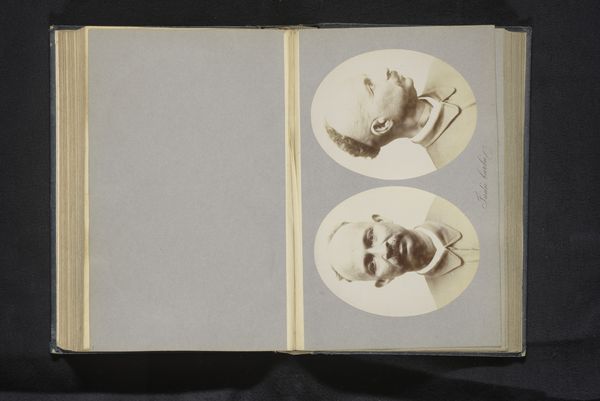
paper, photography, albumen-print
#
portrait
#
aged paper
#
still-life-photography
#
homemade paper
#
paper non-digital material
#
sketch book
#
personal journal design
#
paper texture
#
paper
#
photography
#
personal sketchbook
#
folded paper
#
paper medium
#
sketchbook art
#
albumen-print
Dimensions: height 151 mm, width 241 mm
Copyright: Rijks Museum: Open Domain
These two portraits of Ponmomi and Zinurp of the Toda-tribe were created by Paolo Mantegazza using photography, a relatively new medium in the 19th century. The albumen print process was a means of mass producing images, using paper coated with egg white to increase its sensitivity to light. Photography changed portraiture, as it provided a more accessible means for people to have their likeness recorded. No longer exclusive to the wealthy who could commission painted portraits, photography democratized the practice, yet its own technological requirements still involved expense. Mantegazza's work speaks to the emergence of anthropology as a field, and the way that photography became a tool of scientific classification, supposedly an objective mode of recording, while also framing the subjects in a way that exoticized them for a European audience. The portraits become artifacts for consumption, tied to colonial patterns of labor and representation. In considering this, we acknowledge photography’s significance as both a medium and a cultural artifact, challenging its perceived objectivity.
Comments
No comments
Be the first to comment and join the conversation on the ultimate creative platform.


